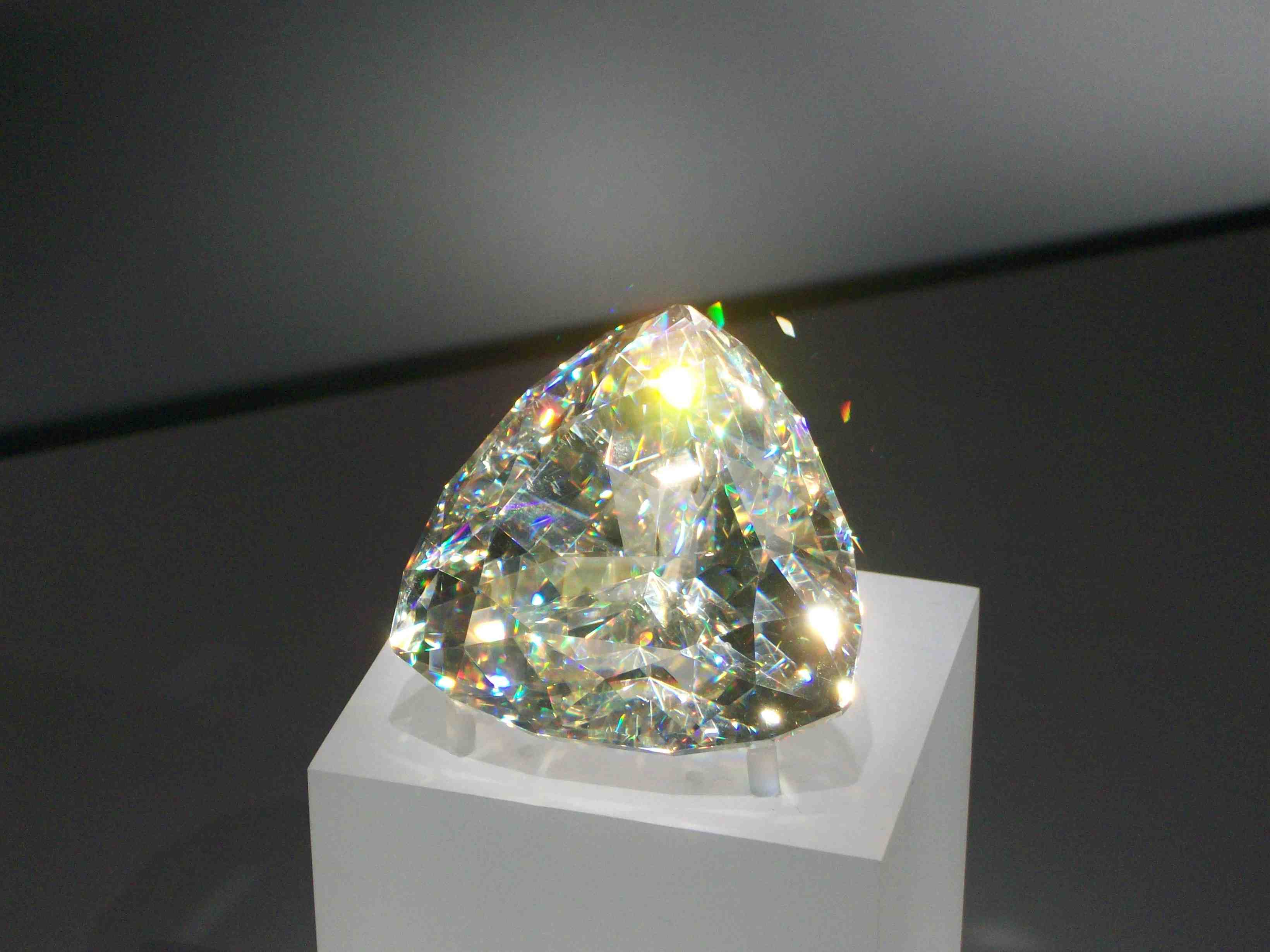What is Gemstone Dispersion?
Learn what gemstone dispersion means, what causes it, and how it relates to other optical effects.
3 Minute Read
What Causes Gemstone Dispersion?
Normal white light is composed of a rainbow of colors. Each of those colors is a wavelength of light. When white light passes through a gemstone, each of its colors travels through it at a different speed. This is literally "dispersion" — the wavelengths previously joined in white light "disperse" and exit the gem separately, creating the rainbow color display. For example, blue is a short wavelength of light and travels slowly through a gem. Red is a long wavelength of light and travels more quickly through a gem than blue.
How Do You Measure Gemstone Dispersion?
Although you can appreciate gemstone dispersion strictly on an aesthetic level, gemologists can measure it with a refractometer and use that information to help identify a gem. The higher the measurement, the more dispersion the gem can display.
Interested in this topic?
This article is also a part of our Zircon Specialist Mini Course, in the unit Identifying Zircons.
Every gem species refracts the distinct wavelengths of light (colors) at different speeds. Gems have a refractive index (RI) for each wavelength of light. Typically, gemologists use a yellow light source (589 nm) to measure RIs. However, to measure a gem's dispersion, gemologists must calculate its RI using red light (686.7 nm), then violet light (430.8). The absolute difference between a gem's red RI and its violet RI equals its dispersion. (Dispersion values have no units).
In cases where the red and violet RIs prove difficult to read, you can use a Hartmann dispersion net (a special type of logarithmic graph paper) to extrapolate the red and violet RIs
Advanced gem labs can also use spectrometers to calculate dispersion. However, using color filters with a refractometer is the most common (and least expensive) technique.
Does Gem Faceting Influence Dispersion?
A gemstone's density, color, and RI all affect how it disperses light. In particular, faceting plays a critical role in how a specific cut gem shows dispersion.
The higher a gem's dispersion value, the more colorful flashes the gem can display. Diamond's dispersion is measured at 0.044. Cerussite's is 0.055. With a dispersion of 0.28, rutile's exceeds that of diamond by more than six times. However, this doesn't mean every diamond, cerussite, or rutile will show the same amount of fire.
Skilled lapidaries can control how light moves within a gem. They can cut a gemstone so that light enters and strikes the pavilion facets at critical angles, causing light to be reflected internally and then back out through the crown facets. This maximizes the fire effect for wearers and admirers. On the other hand, a poorly cut gem may show little fire.
The optics and electronics industries use lithium niobate or linobate extensively. Gem cutters also used this synthetic as an early diamond simulant due to its high RI (2.3) and dispersion (0.13). However, its relatively low Mohs hardness (5.5) made it too soft for most jewelry uses. Nevertheless, custom faceters still cut this material for collectors and some jewelry enthusiasts due to its incredible fire.
This amazing faceted lithium niobate gem weighs a gargantuan 374 carats and measures 38 mm in diameter.
Lithium niobate. © Mark Oros, Hashnu Stones & Gems. Used with permission.
How Does Gemstone Dispersion Differ From Scintillation, Birefringence, and Pleochroism?
Although dispersion, scintillation, birefringence (double refraction), and pleochroism are all effects of light passing through a gemstone, they're distinct phenomena. They result from different gem properties.
- Scintillation or "sparkle" refers to the contrast of light and dark spots in a gemstone. Dispersion refers to flashes of color.
- Pleochroism and birefringent effects are results of how a gemstone's crystalline structure polarizes light. Only gemstones with non-cubic crystalline structures may show pleochroism, two or three colors, or birefringent effects like double vision and fuzziness.
The use of the evocative term "fire" to describe dispersion is also a good way, if a bit poetic, to distinguish dispersion from pleochroism. The colors created by dispersion seem to be "active" and appear to emanate from little fires within the gem. Pleochroic colors seem to be "conditions" or qualities of the gem itself (even though you may have to turn the gem to see the different colors).
Some of the gems with the most dazzling dispersion, such as diamonds and cerussite, have no pleochroic effects. (Diamonds have a cubic crystal structure and cerussite is usually colorless). However, there are gemstones, such as sphene (also known as titanite), that are pleochroic and have a high dispersion, though they may not show both properties at the same time.
For example, this titanite crystal shows its yellow and green pleochroism but no dispersion.
However, faceted sphene gems, such as these, show their dispersion beautifully.
International Gem Society
Related Articles
A World of Crystals
How to Clean Your Gemstone Jewelry
Gemstone Hardness and Wearability
What are Cobalt Spinels?
Latest Articles
Quartz Toxicity: Understanding the Risks for Jewelers and Wearers
Synthetic Amethyst: What is it and How is it Made?
Hambergite Value, Price, and Jewelry Information
Pearl Simulants: How to Spot Faux Pearls
Never Stop Learning
When you join the IGS community, you get trusted diamond & gemstone information when you need it.
Get Gemology Insights
Get started with the International Gem Society’s free guide to gemstone identification. Join our weekly newsletter & get a free copy of the Gem ID Checklist!
